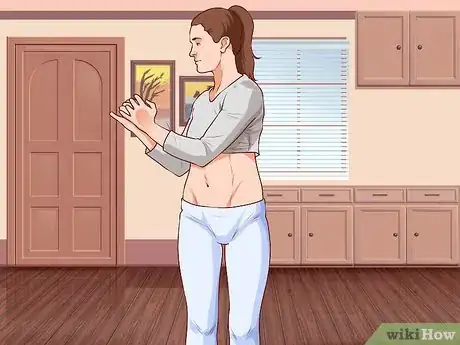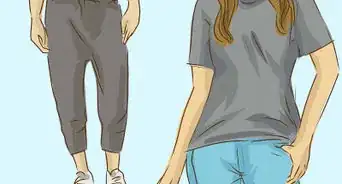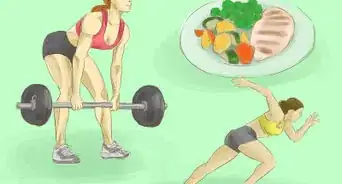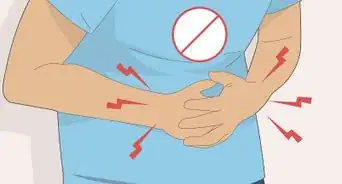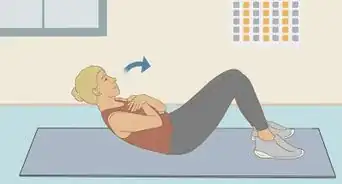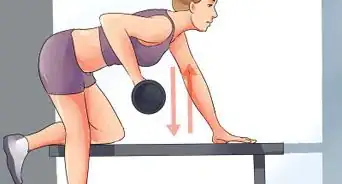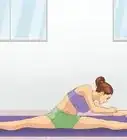This article was co-authored by Yolanda Thomas. Yolanda Thomas is a Hip Hop Dance Instructor based in Los Angeles, California and Sydney, Australia. Yolanda has taught hip hop at the Sydney Dance Company and is a two-time winner of the LA Music Award for singing and songwriting. She has won Choreographer of the Year by GROOVE, an Australian hip hop dance competition and was hired by Google to choreograph their Sydney Mardi Gras float.
There are 7 references cited in this article, which can be found at the bottom of the page.
wikiHow marks an article as reader-approved once it receives enough positive feedback. This article received 11 testimonials and 80% of readers who voted found it helpful, earning it our reader-approved status.
This article has been viewed 324,501 times.
There is some debate over whether dancers should stretch before or after dancing. Increased flexibility will improve your range of motion and may reduce chances of injury, but stretching before dancing can reduce your muscle strength and endurance.[1] Try warming up your muscles before dancing, followed by recovery stretches once you have finished.
Steps
Warming Up Before Dancing
-
1Jog in place. Lift one knee, then the other. Increase the speed to elevate your heart rate, and lift your knees higher to increase the stretch.
- Keep your landing soft to avoid knee injuries.
- Continue until your breathing is affected. This will increase your oxygen intake as you inhale more deeply and frequently.
- Increasing your blood flow by getting your heart rate up will prepare your muscles for both stretching and dancing.
-
2Swing your arms in circles. Extend both arms out to the side. Slowly move both arms in a forward circular motion. Start by making small circles, then increase the distance of your swing as you go so you are extending your arms further toward the ceiling and the floor.
- Swing your arms forward for 20-30 seconds, then slowly bring the circles to a stop and rest your arms at your sides.
- Repeat this exercise swinging your arms backward.
Advertisement -
3Move on to an active, standing spinal twist. From a standing position, plant your feet shoulder width apart and relax your arms at your sides. Rotate your upper body to the left. This should include your head, neck, shoulders and spine. Keep your hips facing squarely forward and don't allow them to move. Swing your arms sideways across your body as you twist above your torso. Twist back past center and on the right side.
- Relax your shoulders. Your arms should be free to swing back and forth.
- Twist left and right for 20-30 seconds
-
4Add knee bends. From a standing position, bend at the hips, reaching your hands toward the ground and gently bounce at the knees. Swing your torso to the left and right. Relax your arms and allow them to sway like the trunk of an elephant.[2]
- Continue for 20-30 seconds.
- Avoid bending too far or having your knees cross over the extension of your toes.
-
5Include dynamic stretching. Dynamic stretching could include lunging through downward facing dog to prepare for the movements required for dancing.[3] This is more controlled than ballistic stretching, but moves through the range of motion and prepares the body for the requirements involved in the dance.[4] Lunge forward by stepping one leg in front of you with the knee bent. Do not let your bent knee extend beyond your toe. Place your hands on the floor on either side of your bent knee with palms flat. Extend your bent leg back to meet your straight leg, but keep your feet should width apart. You should now be in a plank position. From this position, lift your hips and pull them back toward your feet with your heels pressing toward the floor, putting you in a pike position.
- Hold the pike position for 15-20 seconds.
- For an extended stretch, lift and extend one leg behind you. Point and flex your toe, then replace your foot and repeat this motion with the other leg.
- Another option is pressing one heel into the ground while slightly bending the opposite knee, then switching to pressing the opposite heel to the ground. This will give an additional stretch to your calves.
- Slowly roll your spine back to standing, and repeat this entire process by stepping forward into a lunge with the opposite foot.
- Repeat this entire process 6-8 times.
Recovering After Dancing
-
1Stretch your back, hamstrings, buttocks and calves with side stretches to the ankle. While seated on the floor, extend both legs out to the sides as far as possible without experiencing painful discomfort. Bend one leg at the knee and place the bottom of that foot along the thigh of your extended leg. Keeping your back as flat as possible, reach toward the ankle of your extended leg.[5]
- Gently sit back up and repeat this process after switching legs.
- Hold each stretch for 30 seconds and repeat it 2-3 times per leg.
-
2Involve a friend to help in stretching your hip flexors for increased range of motion. From a standing position, lift one leg as high as possible directly out to your side, while keeping your hips square. Have your partner cup their hand below your calf to support your leg. Attempt to lift your leg out of your partner's hand and replace it. Hold the leg out of your partners hand for 2-3 seconds. Relax your leg back into your partner’s hand and repeat this stretch 6-8 times before changing legs.[6]
- Once you have lifted and replaced your foot 6-8 times, repeat this whole process with the other leg.
- Adding a friend provides resistance and your body will have some recovery time while you assist them in their stretch.
-
3Include an abductor stretch for your shoulders. From a standing position, bend your right arm at the elbow and reach it behind your back as far to your left side as possible. Grab your right forearm with your left hand and gently pull your right arm further to your left side to increase the stretch.
- Hold this stretch for 8-10 seconds.
- Repeat the stretch on the other side.
-
4Stretch your inner thighs using the butterfly position. While seated on the floor, draw both feet in and place the bottoms of your feet together with your knees pointed out to the side. Draw your heels in toward your body as far as you can. Gently apply pressure to your inner thighs just below your knees by pressing them toward the ground with your hands or elbows.
- Hold this stretch for 20 seconds, gently increasing the pressure throughout the stretch.
- If this is easy and you would like to advance the stretch, lean forward at the waist while keeping your back straight.
- Avoid bouncing your knees in the butterfly stretch.
Community Q&A
-
QuestionWhat if I'm not flexible?
 Community AnswerFlexibility is not a matter of whether you are or aren't. It's something you have to work on and practice everyday, or as much as possible. By doing simple stretches everyday, you will see your flexibility improve.
Community AnswerFlexibility is not a matter of whether you are or aren't. It's something you have to work on and practice everyday, or as much as possible. By doing simple stretches everyday, you will see your flexibility improve. -
QuestionI try so hard and I'm never flexible enough. What can I do?
 Community AnswerEach person's body is different. You may need to try some different stretches if your body is not responding to the ones you're currently doing.
Community AnswerEach person's body is different. You may need to try some different stretches if your body is not responding to the ones you're currently doing. -
QuestionI want to be a contemporary dancer, but I am fat, what do I do?
 Community AnswerYour weight shouldn't stop you! Even though being overweight can bring its challenges and affects a lot of us for various reasons (eg. low metabolism, overeating, stress, depression, etc.), you should never allow it to determine how your future unfolds. If you are still feeling insecure, most dancers do have very healthy lifestyles and train, A LOT. This means weight loss will happen if endurance and continuity are maintained. If you feel like your weight is holding you back, work on that first and love you for you. If you don't, you might feel uncomfortable dancing in front of others in a leotard, for example. Again, exercise and maintain a healthy lifestyle for optimum weight loss.
Community AnswerYour weight shouldn't stop you! Even though being overweight can bring its challenges and affects a lot of us for various reasons (eg. low metabolism, overeating, stress, depression, etc.), you should never allow it to determine how your future unfolds. If you are still feeling insecure, most dancers do have very healthy lifestyles and train, A LOT. This means weight loss will happen if endurance and continuity are maintained. If you feel like your weight is holding you back, work on that first and love you for you. If you don't, you might feel uncomfortable dancing in front of others in a leotard, for example. Again, exercise and maintain a healthy lifestyle for optimum weight loss.
Warnings
- Listen to your body and don’t push it too far if you are feeling pain.⧼thumbs_response⧽
References
- ↑ http://www.scientificamerican.com/article/experts-dance/
- ↑ https://www.iadms.org/?353
- ↑ http://dancemagazine.com/inside-dm/higher-extensions-lower-risk/
- ↑ https://www.iadms.org/?353
- ↑ https://www.iadms.org/?353
- ↑ http://c.ymcdn.com/sites/www.iadms.org/resource/resmgr/imported/info/Bulletin_for_Teachers_2-1_pp9-12_Wyon.pdf
- ↑ Yolanda Thomas. Dance Instructor. Expert Interview. 15 November 2019.
- ↑ Yolanda Thomas. Dance Instructor. Expert Interview. 15 November 2019.
- ↑ https://www.antoniopacelli.com/community/article/warm-up-and-cool-down
- ↑ https://www.antoniopacelli.com/community/article/warm-up-and-cool-down
- Videos provided by PsycheTruth

